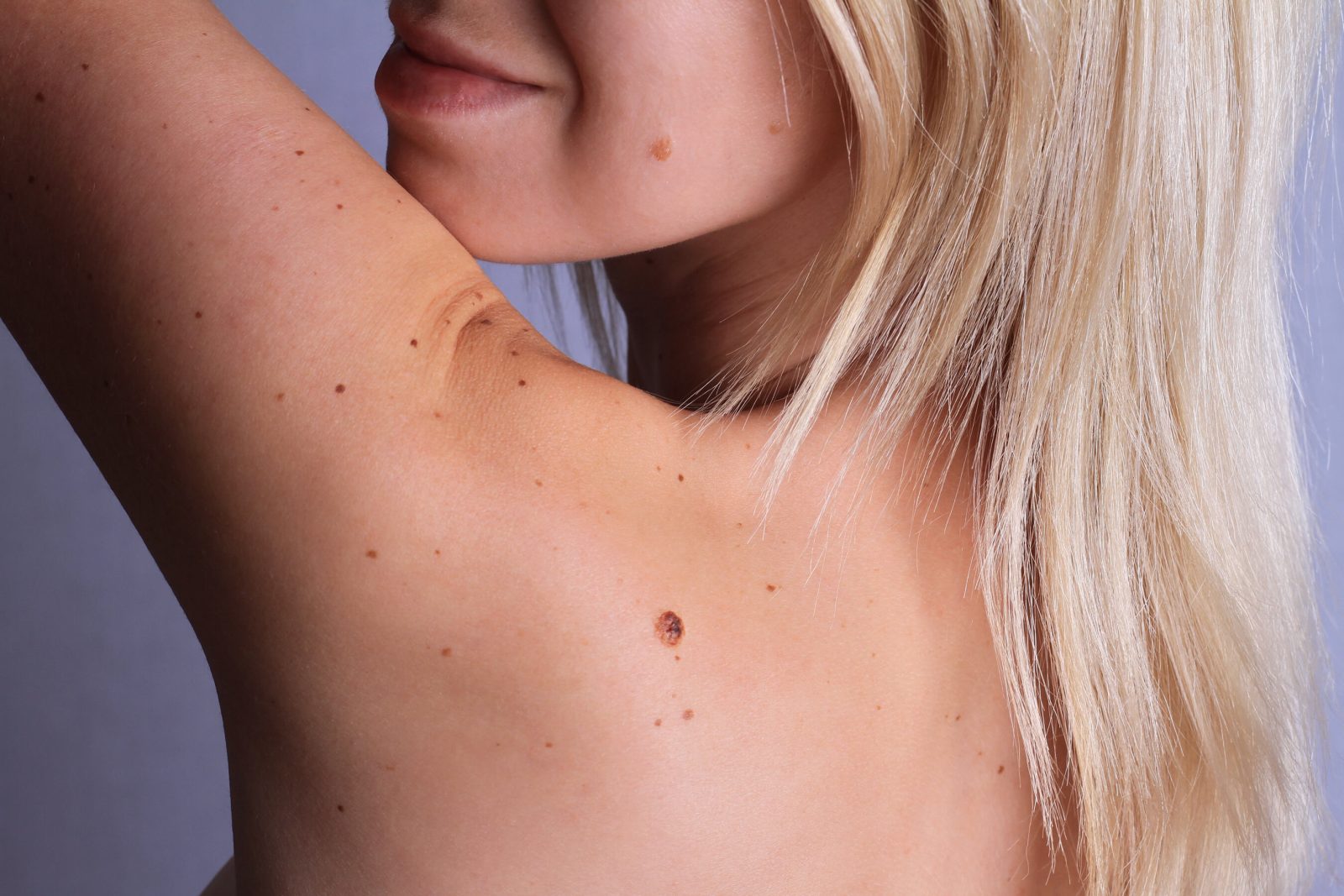 Photo Credit: Shutterstock
Photo Credit: Shutterstock
Your body is your temple. If you do not know how to treat or understand it correctly, issues can arise. In the case of your skin’s health, it is essential to know how to analyze a spot that just appeared out of nowhere or a rash that has suddenly broken out. Although you are not an expert, it is important to note how to analyze your skin and seek professional help. Here Haute Beauty gathered our Haute Beauty experts to review what to look out for, how to give yourself a skin check, and much more.
Dr. Omar A. Ibrahimi | Skin | Stamford/Greenwich
One wants to keep their eye out for new or changing growths on their body. If there is something new or changing, you want to spend a little time assessing it, it is bleeding or tender? Is it symmetric and a single color? If there are any symptoms like bleeding, multiple colors, or the lesion changes over a short period (weeks or months), it’s something to go in and show a professional.
The best way to do a self-skin check is to do it right after you get out of the shower. Start methodically and look at each arm front and back, then look at your face in the mirror and if you have a lot of hair, part your hair in multiple areas to see if there are any spots on your scalp, then use your bathroom or a full-length mirror to look at your back. Then look at the front and back of each leg. Finally, look at the bottoms of your feet and between your toes. This is great to perform once a month. It is also recommended to see your board-certified physician dermatologist once a year.
For more information, visit Dr. Ibrahimi’s website, Instagram, or Facebook!
Dr. Harlan L. South | Anti-Aging | San Francisco
Our skin represents the largest organ of our body. Therefore, our skin’s appearance often reveals our inner body’s health such that serious medical disorders sometimes first appear as skin disorders before any investigation begins. Thus, keeping our inner body healthy will show a youthful, ageless appearance.
Because skin cancers and disorders are on the rise worldwide, it is very important to perform periodic skin checks on our bodies. At least monthly, while bathing, it is recommended that we inspect our bodies for any unusual skin lesions or discolorations. Any such questionable lesions should be further reviewed by a medical professional. Some areas of our bodies, such as the back and posterior side, may require our significant others to review the areas for any suspect lesions.
There are some daily routines that we can practice to ensure a healthy appearing skin. Hydration is one of the most important practices that deflect some sun damage and provide a natural moisturizer for the skin. In addition, our nutrition also influences our skin health such that an unhealthy diet can produce acne and other inflammatory skin disorders. Frequent bathing can cause dryness such that it is important to use naturally based products to rehydrate the skin, including oils and creams with natural ingredients that won’t irritate it. For outdoor activities, it is important to utilize sunscreen of at least SPF 30 as well as the product having non-synthetic organic-based ingredients.
Overall, our skin represents the most important barrier of our body, and it is essential that we monitor its appearance daily for beauty but also monitor it monthly for potential serious lesions.
For more information, visit Dr. South’s website, Instagram, or Facebook!
Dr. Kiran Mian, Hudson Dermatology & Laser Surgery | Skin | New York
When it comes to skin cancer, the best part about it is that for the most part, it’s visible! Being familiar with our skin allows us to detect any changes ASAP and detect skin cancer. I recommend my patients do a monthly self-skin exam. Start with your scalp, and work your way down. Start with one side of your scalp and part your hair in one-inch increments, examining your scalp for any moles or bumps.
Next, scan your face, don’t forget behind your ears, and work your way down your body. For the back or other hard-to-see areas, you can use a handheld mirror or have a friend/family member take a photo. Photos are great because you can use them to compare your moles monthly.
What should you look out for? Changes! The ABCDEs of moles are as follows: asymmetry, smooth borders, homogenous color, diameter, and most important, E for evolving! If you notice your moles are getting bigger, changing shape, getting darker, or even losing color, a trip to the dermatologist is warranted.
Other skin cancers can appear as a “pimple” that’s not going away. Is it growing and bleeding easily? Or is it a scaly patch that you’ve applied moisturizer on for weeks, and it’s still not healing? These symptoms warrant a trip to the dermatologist for reassurance. Regardless, a yearly skin check by your board-certified dermatologist is recommended without any concerns. Don’t wait the year if you come across anything on your monthly self-skin exams. Come on in!
For more information, visit Dr. Mian’s website and Instagram!
For more information, visit Dr. Brian A. Levine's social media:

























